Photocomix are strange creatures. They look like a hybrid of a photography medium and a comics format, and when you spot them in the wild you’re never sure whether they arose as some part of a natural evolutionary process in art or if they were the result of some kind of misguided experiment, maybe even one gone wrong. That reaction’s been shaped by encountering low-quality work with vague pretensions at humor, or perhaps offering some behind the scenes reveals about the comics making process. Frozen, melodramatic poses and cheesy dialogue are par for the course. And so, if a reader spots photocomix roaming free online or in a shop, they approach with caution and refuse to get their hopes up regarding quality.
Then there’s FORCEFIELD FOTOCOMIX, which makes you feel guilty for all of that instinctual caution and pre-emptive wariness. It gives you what no one really dares expect or demand from photocomix, a team of seriously talented individuals on a mission to exploit the full potential of the medium. To do this, they decide to spin this collection of comics into a number of genres, covering all the bases and it’s as if they are illustrating future directions for photocomix.
The man behind the camera, someone whose work has defined “serious” photography of the cultural zeitgeist in the past decade and then some, is Seth Kushner, the co-creator of the celebration of comics tradition LEAPING TALL BUILDINGS with Christopher Irving. Kushner’s photo portraits of comics creators in LEAPING TALL BUILDINGS have garnered so much attention that they’ve been scavenged by internet sites repeatedly and Neil Gaiman even chose to use Kushner’s portrait of him as his new dust-jacket image. He’s been working on photocomix for some time now, creating a CulturePOP series for the digital arts salon TRIP CITY, profiling real lives in comics format from author Jonathan Ames to adult film star Stoya, but FORCEFIELD is a departure into the realm of total composition in fictional realities.
During an informal conversation at Hang Dai Studios, where Kushner keeps a tidy computer work station flanked by a few vinyl and action figures, he revealed some of the process behind his striking cover to FORCE FIELD. He staged a full-on photo-shoot to capture the images in his mind by engaging actress Zoe Sloan, as well as a costume designer and a makeup artist, to create a Barbarella homage fused with a direct design reference to a Jim Steranko cover of BLADE RUNNER from Marvel Comics. The Steranko cover, which uses multiple color reduplications of the hero pointing a gun, inspired Kushner to pose Sloan holding, instead, a Super 8 camera in retro style. The metaphor’s impressive: Kushner’s camera is a loaded weapon at the center of the strange narratives contained in FORCEFIELD, capable of directing the reader’s experience, and by using a Super 8 video camera rather than simply a camera, he’s suggesting the role of storytelling.
Kushner’s increasingly open these days to revealing the process behind his work to generate enthusiasm for the forms themselves and encourage others to experiment, as evinced by his recent contribution to TRIP CITY, a blow-by-blow narrative of the steps by which the first comic in the collection, “The Hall of Just Us”, called “Anatomy of a Photocomic”. The story, co-scripted by Emmy Award winning artist Dean Haspiel, led to its own formal photoshoot at the recently hurricane decimated by increasingly resilient Sunny’s Bar in Red Hook. Kushner and Haspiel set about “casting the roles, as we would for a film”, says Kushner, and the co-creators drafted full layouts for the comic before shooting, giving them a “map to follow”.
They created the comic shot for shot, a tale of three “miscreants”, superheroes in a bar chasing a super-powered lady’s attentions, “The Tarot”. After the shoot, time-consuming photo-shopping and comics construction added text, word balloons, and special effects. But all of this description only hints at the visual impact of “The Hall of Just Us”. It’s all about mood, created from strongly color-themed lighting (the pink, blue, and yellow of the cover’s design), and about the off-beat simple hero costumes straight off of Mego action figures or the BATMAN television show of the ‘60’s.
While the heroes posture and ratchet up the bombast, The Tarot figure, portrayed by model and artist Katelan Foisy, brings an eerie presence and substance to the narrative. She can see the future “sometimes” and sees the other heroes as Tarot figures, commenting “There’s the path you can take or the road you can make”, but she’s really calmly waiting for her “date” known as Señor Amore, portrayed by Haspiel. This is certainly the “romance” genre promised by the cover as one narrative alternative, but it leaves room for reader-interpretation. Superheroes with super powers are still hanging out in a bar, looking for love, for one thing.
“Spiders Everywhere” provides the “horror” also promised by the cover, and again homage to genre comics and films is evident. The narrative and premises are simple- horrific waves of spiders taking over the world, but Kushner plays to the strengths of the photocomix medium by conveying frantic movements and moments of psychological realization in cinematic style.
“Understanding Photocomix”, a visual walk through Kushner’s history with photography and photocomix, which first appeared in American Photo Magazine, supplies the metadata on the very form in which its composed. It also forms a clever narrative bridge between the first chapters of FORCEFIELD and its follow up chapter COMPLEX, by explaining Kushner’s increasing drive to push the boundaries of photocomix in a “full fictionalized graphic novel” that he’d “direct like a movie using actors and locations”. In many ways, FORCEFIELD is the herald of that process, and it’s Volume number “.01” suggests that it’s a forerunner of bigger things to come.
The story COMPLEX: “Luv_Underscores_U”, kicking off Kushner’s work on his dream project of the COMPLEX graphic novel, first appeared in Jimmy Palmiotti’s CREATOR OWNED HEROES #7 alongside Kushner and Irving’s ongoing profiles of indie comics creators (a follow-up project to LEAPING TALL BUILDINGS). It’s a lavishly shot and designed comic which plunges into science-fiction BLADE RUNNER style, another link to FORCEFIELD’s cover image. It constructs multiple virtual realities visually with ethereal attention to detail and emphasizes a governing psychological perspective, a central character keeping all these virtual worlds in motion for the reader. This isn’t far from the role of the camera itself seeming to direct the reader, perhaps FORCEFIELD’s hypothetical Super 8 on the cover itself.
The final chapter of FORCEFIELD, a never before published noir tale, “The Perfect Woman” appears in uncharacteristic emphasis on black and white tones, with hints of color. Kushner’s photography is known for its psychedelic presentation of color through light effects, but also for his more sepulchral, moody hues in portraiture. Here he does with black what he often does with a solid color, making it a rich compositional basis into which he incises featured characters and settings. Like a compelling dime store novel rich with noir tropes, the story pursues an elusive lady in a cityscape from the visual perspective of a narrator. Kushner’s locations for this shoot were clearly exacting, capturing a city of the 1930’s complete with architectural detail. But the reader should have expected that this is a collection of stories with an expicit BLADE RUNNER homage and technology and perception may play as strong a role as the romance of pursuit.This is the “mystery” genre, completing the triad of color themes and pulp homage.
To add to the total design package that is FORCEFIELD FOTOCOMIX, it’s also presented in slick prestige magazine format with card covers, suggesting that photocomix can find their own effective dimensions for publication, in this case somewhere between a traditional comic and a traditional large-format photobook. But the format also speaks to Kushner’s consistent, passionate attention to detail throughout the collection which seems to constantly remind the reader of his fundamental belief in the art behind the form. The photocomix in FORCEFIELD are visually riveting, one might even say mind-altering, but the stories are also expansive, creating strange pocket universes with their own sets of rules and assumptions. Exploring them is part of the intrigue. Seeing FORCEFIELD in the wild is bound to make an impact on our assumptions about what photocomix have been, and more importantly, what they can be as a narrative medium in their own right. Kushner was inspired by comics, photography, and films to launch this project. In the future, creators might well be saying that they were inspired by FORCEFIELD to take photocomix in equally surprising and mesmerizing directions.
[Kushner answers, "What's the coolest item in your collection?" for Hanzarai.com]
FORCEFIELD FOTOCOMIX Vol.01 will be available for physical sale for the first time at the upcoming Asbury Park Comic Con March 30th, but the limited edition is already available for order through Kushner’s etsy shop.
Title: Seth Kushner’s FORCEFIELD FOTOCOMIX Vol.01/Publisher: Self-Published/Creative Team: Photographer, Seth Kushner/ Design, Seth Kushner and Dean Haspiel/ Writers, Seth Kushner, Dean Haspiel, Chris Miskiewicz/ Edits by Dean Haspiel
Hannah Means-Shannon writes and blogs about comics for TRIP CITY and Sequart.org and is currently working on books about Neil Gaiman and Alan Moore for Sequart. She is @hannahmenzies on Twitter and hannahmenziesblog on WordPress.




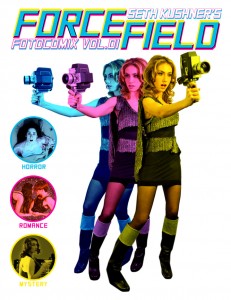

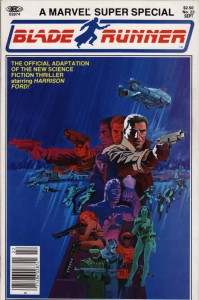
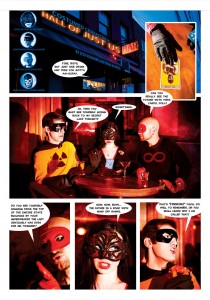
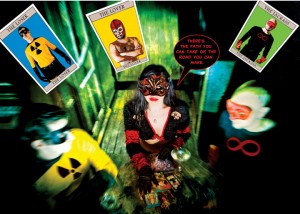

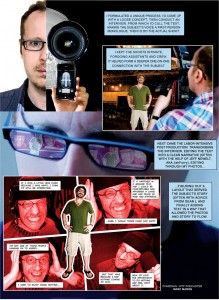

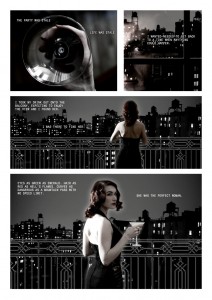


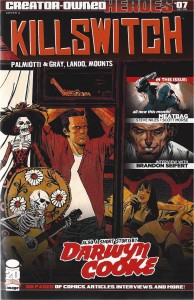
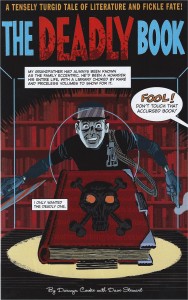
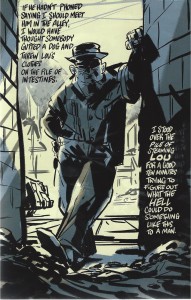
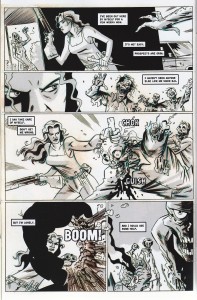
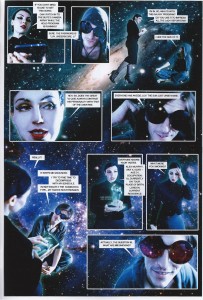

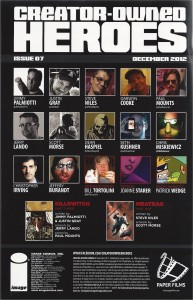
This looks great. Stunning actually, but at $10? Ouch. I realize the cost of making something like this is a lot, but at only 32 pages… It’s going to be a novelty item only till they can bring the price tag down. If this was $6, its a much easier buy.
[...] The Beat – Forcefield Fotocomix #.01 [...]